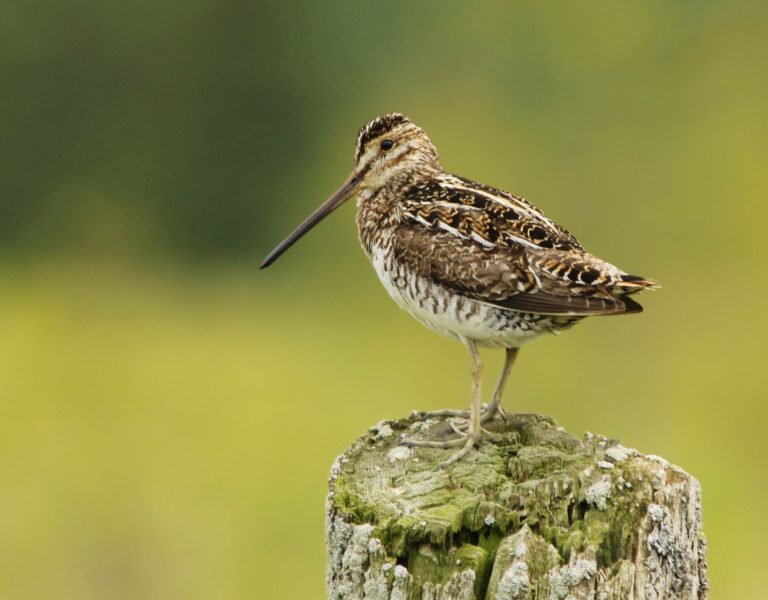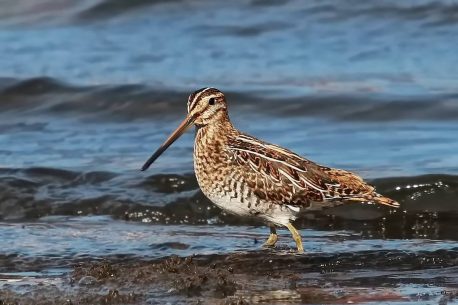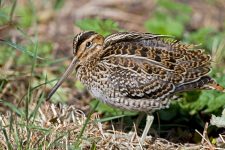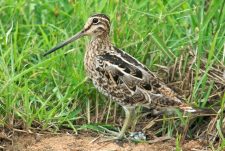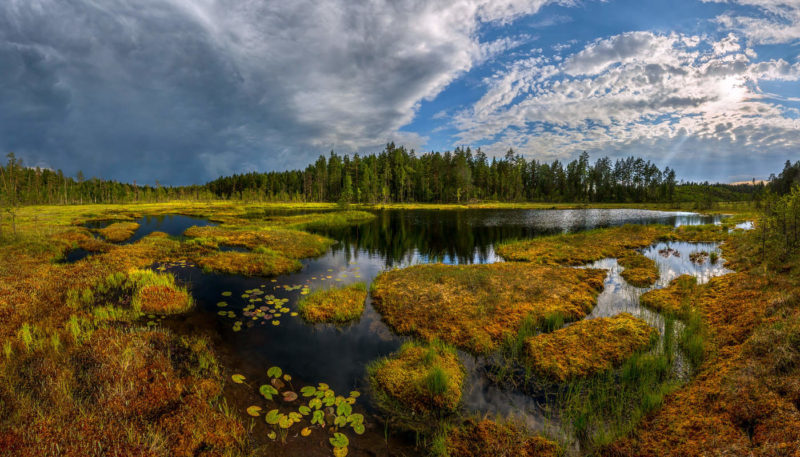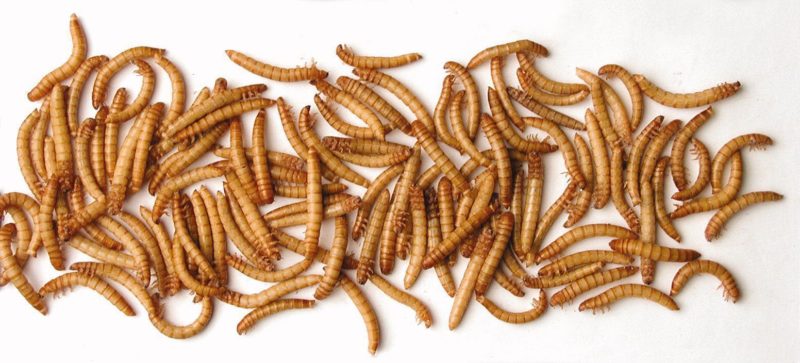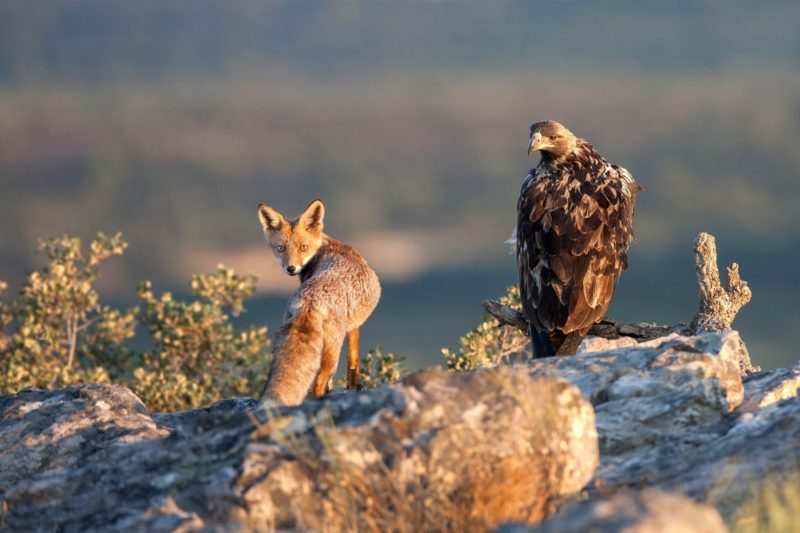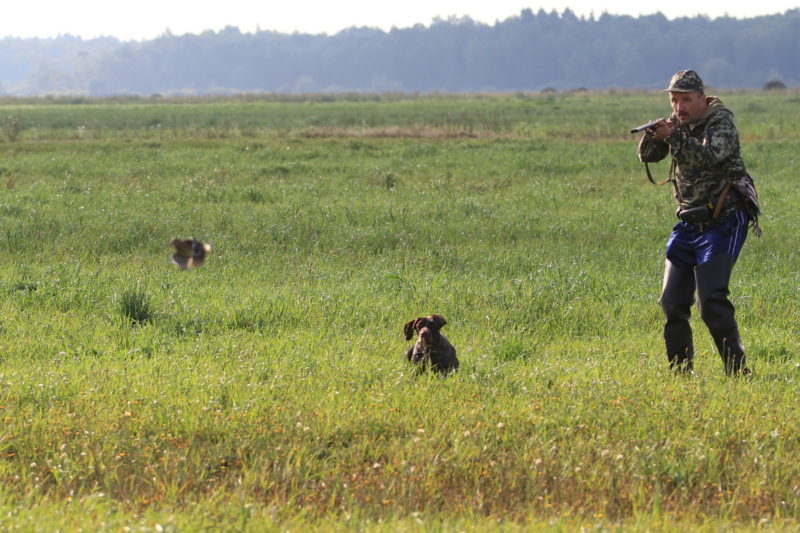The secretive marsh bird snipe common is less common. Due to the drainage of swamps and lakes, the habitat is declining. The sandpiper has a characteristic appearance and interesting behavioral features; it is a popular object of sport hunting.
Material Content:
Description and features of the bird
The most remarkable thing in the appearance of the bird is its long beak, similar to a spoke, thanks to which it obtains food for itself in silty soil. And thin long legs help her to move around in marshy places. The entire large snipe family, to which snipe vulgaris belongs, boasts a long beak and legs.
Type Description:
- graceful small sandpiper with motley, brown plumage and white belly;
- body length - about a quarter meter;
- body weight - from 100 to 180 g.
The color of the bird makes it invisible to the human eye, masking well on the surface of the soil, among dry grass and bumps. On long, strong legs with slender fingers, she confidently moves along the swampy surface of the swamp or the shore of the lake. High set eyes carefully monitor what is happening. In case of danger, the sandpiper escapes or swiftly flies up into the air, making a characteristic sound "chevek". Snipe is popularly called the lamb. He received such a nickname because of the special “bleating” sounds that the tail feathers of his tail make in flight.
Types of Snipe
Depending on the habitat, American snipe and Eurasian are distinguished. The snipe, inhabiting the north of the American continent, have a darker plumage and have an additional pair of tail feathers. Therefore, the sounds during flight that birds make are different from the familiar bleating.
In Russia, 6 species of snipe are common:
- common snipe;
- Japanese snipe;
- great snipe;
- mountain hollow;
- Asian snipe;
- forest hollow.
The bird is an object of hunting. You cannot shoot only Japanese snipe, which are listed in the Red Book of the Russian Federation.
Habitat and habitat
The habitat of birds includes wet, marshy lowlands, tundra, shores of lakes and rivers, wet peatlands. They build nests in the temperate and subarctic climate of the Eurasian continent, including the British, Faroe, Azores, Iceland, Kamchatka and Sakhalin. You can meet snipe in the south of France, in Italy and in Ukraine (south of the Lugansk region, the north of Odessa and Zaporizhzhya), in the valleys of the Urals and Volga. In winter, they fly to the Black Sea-Caspian region, Western and Southern Europe, the tropics of Asia and Africa.
In America, snipe inhabits vast territories from Alaska to Labrador, found south to Arizona, Nebraska, Illinois, Ohio and New Jersey. This bird is widespread in the world, it can not be found only in Australia and Antarctica.
What does a bird eat
The snipe diet consists of aquatic invertebrates. A long beak up to 7.5 cm helps the bird in water hunting. Submerging it deep in silt, the sandpiper finds small larvae, worms, fish fry and other animals. The tip of the beak can open when it is completely immersed in marshy soil. Groping for prey, the bird grabs and swallows it without raising its head from the surface of the swamp.
When there are not enough insects, the sandpiper eagerly regales on algae, seeds, roots and other plant food. Searches for food usually in shallow water, using not only touch, but also a wonderful sense of smell. It is believed that he can smell edible larvae from afar. Thanks to the eyes that are located in the upper part of the head, the bird has a good viewing angle. During the hunt, a snipe can clearly see everything that is happening around and escape in the reeds from predators at the first sign of danger.
Breeding and offspring
Arriving from the warm edges to the nesting site at the end of March, the males occupy the area on which the nest will then be built. To attract females, toxing begins. Birds make their famous “bleating” sound with feathers during a swift flight upside down from a height of about 70 meters. Sitting on the ground or stump, the males repeat the monotonous “tech-tech-tech”. The voice of a snipe is carried over the surroundings of the swamp, attracting the female.
Having formed a pair, the birds make a nest among the reeds, on a hummock or in a small hole. Having laid small spotted eggs, the female begins to incubate the chicks.
She does this on her own, without the help of a male. After about 17-20 days, cute chicks are born. They are well developed at birth and will soon be able to leave the nest. The color of the chicks is attractive - chocolate with dark touches and white specks. Birds are monogamous, both parents take care of the offspring, sometimes sharing a brood during walks. At the age of one month, young snipe make their first flight attempts, and in case of danger they hide in the grass and wait for their parents to drive the enemy away.
Life expectancy, snipe hunting
In nature, snipes have many natural enemies - foxes, wolves, birds of prey. If they do not eat, then hunters can shoot. Therefore, life expectancy is 10 years (this is more a theoretical term than reality). They can shoot an inexperienced chick who has just left his nest.
During nesting and raising offspring, snipe hunting is prohibited. The season opens at the end of August, by this time the bird becomes less shy and walks on the "fat". Amateurs-hunters consider its difficult flight to be the most interesting in hunting for snipe. Taking off from the ground, the sandpiper makes several zigzags, during which it is very difficult to shoot him. Rising upwards, the snipe leveles the flight, the hunter needs to be ready to make an accurate shot.
Go hunting for a bird with a dog or on their own. The dog, sensing the prey, takes the stance, the hunter comes up behind and gives the command.When the dog scares away the snipe, he will make a shot and the four-legged helper will find the carcass of the bird in the swamp thickets. An independent walk with a gun in search of prey is not considered so exciting: the bird takes off too suddenly from under its feet.
Cautious and clever snipe, which is shot for fun - a sad legacy of the wild past or thoughtless attitude to the present. It’s much more interesting to just watch these dexterous birds and admire their beauty.


